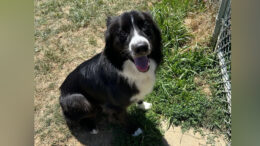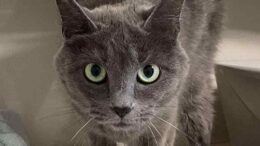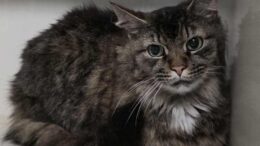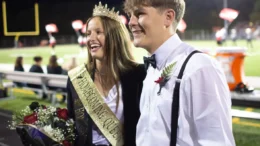This article explains what native plants are, their benefits, and where to acquire them. It also includes tips on how to use native plants in the home garden.
Someone advises you to grow native plants; you wonder what they are and why you should have them in your garden. You ask, “What difference would it make if I planted them?” I promise you that native plants make a huge difference.
What Are Native Plants?
There are several definitions of the term “native plant.” I like the one given by the Pennsylvania Department of Conservation and Natural Resources describing a native plant as one which occurred within this region before settlement by Europeans. Native plants include the ferns, grasses, perennial and annual wildflowers, woody trees, shrubs, and vines that covered Penn’s Woods when the first settlers came. Some examples may be growing in your garden already: garden phlox (Phlox paniculata), bleeding heart (Dicentra eximia), beebalm (Monarda didyma), New England aster (Symphyotrichum novae-angliae), butterfly weed (Asclepias tuberosa), and flowering dogwood (Cornus florida).
Benefits of Using Native Plants
There are compelling reasons why you should plant natives in your garden:
- Native plants preserve Pennsylvania’s biodiversity.
- Biodiversity means the number and variety of living things in a specific region. Our native wildlife, especially birds, butterflies, pollinators, and other organisms, evolved with the plants here; many can only feed on plants they co-evolved with. Unfortunately, unwise development has led to large expanses of lawn and exotic (nonnative) plants replacing natural areas. If your garden has no native plants, it becomes an ecological desert for the pollinating insects that are essential to our survival. Without insects to pollinate our crops, we would have none, or humans would need to perform the task. This is occurring in China where they use costly hand pollination for some fruit crops due to the lack of pollinating bees. Additionally, native plants are needed to support songbirds by supplying food for the insects that most baby birds require. They provide the habitat (food, cover, and places to rear their young) that wildlife needs. Without native plants, our wildlife is at risk of extinction.
- Native plants are not invasive.
- A nonnative plant is one growing outside its natural range. Some exotic plants have become invasive, aggressively spreading into natural areas and threatening our native plant communities. Some native plants are certainly more aggressive than others, but that does not make them invasive. Using regionally appropriate, site-appropriate native plants reduces the risk of introducing an invasive exotic.
- Native plants are generally easier to grow and cheaper to maintain.
While some native plants, like the lady slipper orchid (Cypripedium spp.), have xacting requirements and are best enjoyed in the wild, native plants are well adapted to our climate and soils because they evolved here. This means they are generally easier to care for once they are established, needing little or no pruning, deadheading, watering, or fertilizing. Large lawns and showy exotic plants demand high levels of fossil fuel use, fertilizers, pesticides, and supplemental water, making natives a less costly option. Another consideration is that a native plant garden reduces noise pollution from mowers, blowers, and trimmers. Site your native plant in a spot that provides the conditions it prefers — soil type, water amounts, sun, or shade — and it will thrive. It is always important, however, to remember the mantra, “Right plant, right place.”
- Native plants provide year-round beauty.
- From flowers in spring and summer to brilliant fall color and interesting bark in winter, native plants give four seasons of beauty. You can find a native alternative with similar color, texture, or habit for most exotic plants. It is easy to have a beautiful garden and benefit the ecosystem at the same time.
Where to Buy Native Plants
Do not take native plants from the wild as this is a threat to their populations and a disruption of the ecosystem. Purchase from a reputable source. Your favorite nursery may stock them, or you may wish to visit one that specializes in natives.
Tips on How to Use Native Plants
Here are some suggestions on how to use native plants:
- Integrate them into your perennial borders. A blending of natives and nonnatives is suitable for many sites. For example, in the shade garden, the strong foliage of Hosta sieboldiana ‘Elegans’ (native to Japan) contrasts and complements the small leaves of the native wild ginger (Asarum canadense.)
- Naturalize a large area such as a meadow or woodland with more aggressive natives such as sunflowers, asters, and black-eyed Susans.
- Create a rain garden with natives; their root systems stabilize and hold the soil.
- Choose plants that tolerate fluctuating water levels such as blue flag iris (Iris versicolor), cardinal flower (Lobelia cardinalis), great blue lobelia (Lobelia siphlitica), and blue star (Amsonia tabernaemontana).
- Replace unsightly and invasive plants with natives.
- Reduce the size of your lawn by adding a bed of native plants.
- Create a butterfly garden. In mine, I planted butterfly weed (Asclepias tuberosa), marsh blazing star (Liatris spicata), phlox (Phlox paniculata), and beebalm (Monarda didyma).
Educate yourself about native plants that are native to your area. Obtain reliable, unbiased information from university or government publications and websites. Visit native plant nurseries and preserves to get ideas. Then use native plants in your garden, knowing that you are preserving biodiversity, enhancing the livability of your home, and ensuring a legacy for your children and grandchildren.
This educational blog is a series of informative articles from the Penn State Master Gardeners volunteers plus news concerning the group and their activities. For more information, click here.































